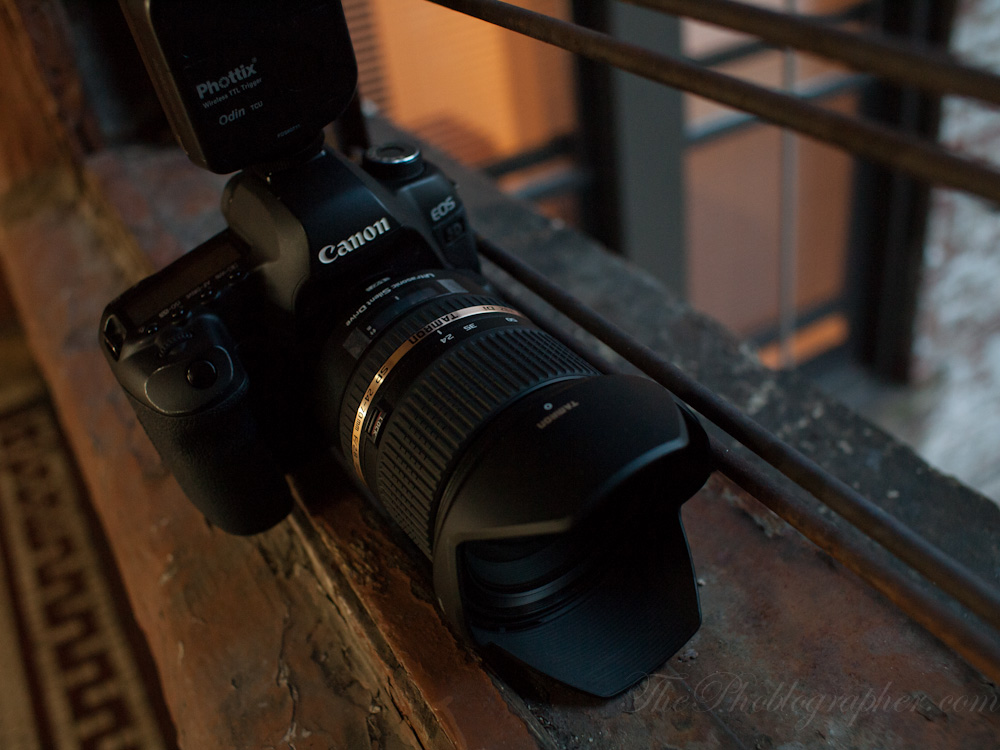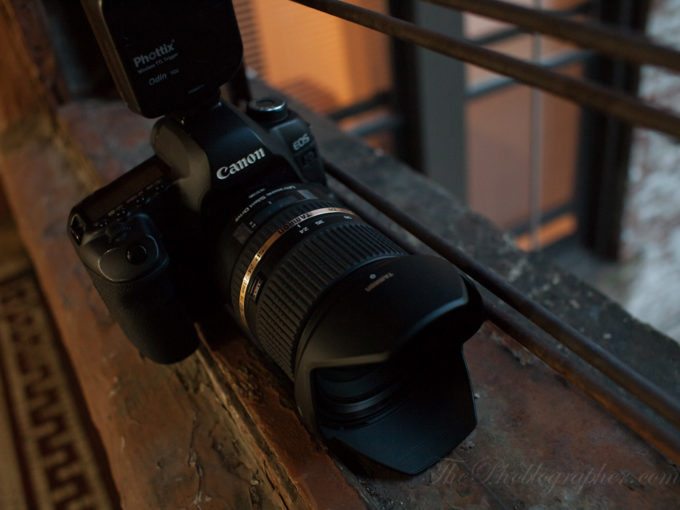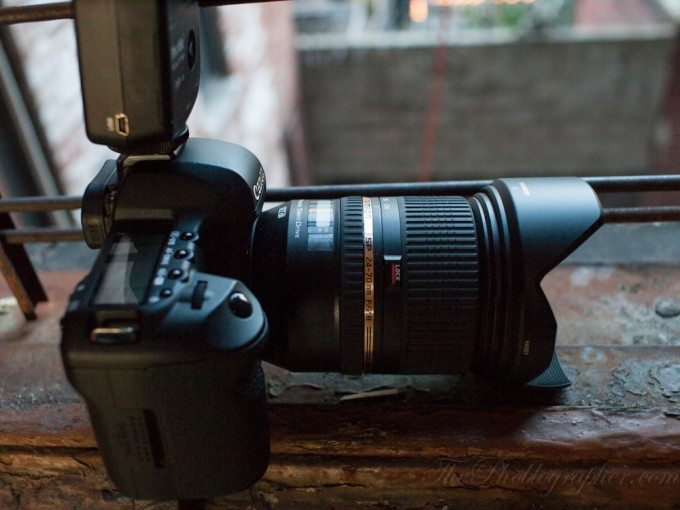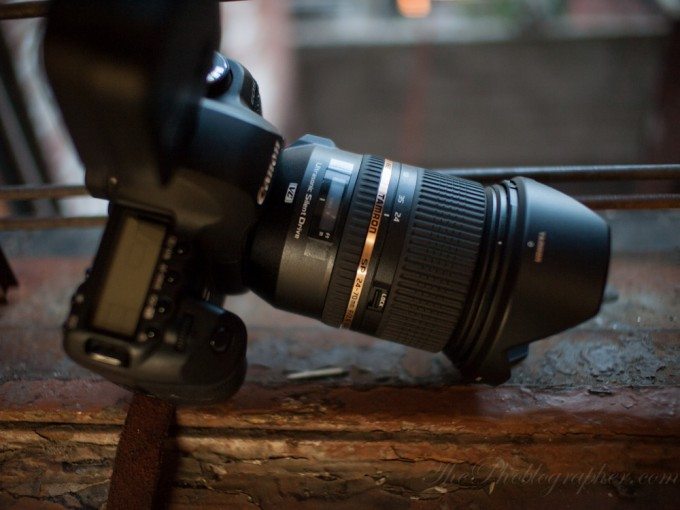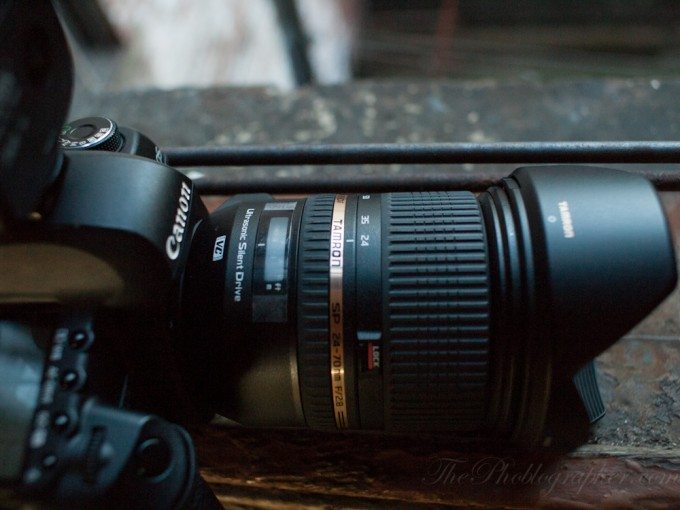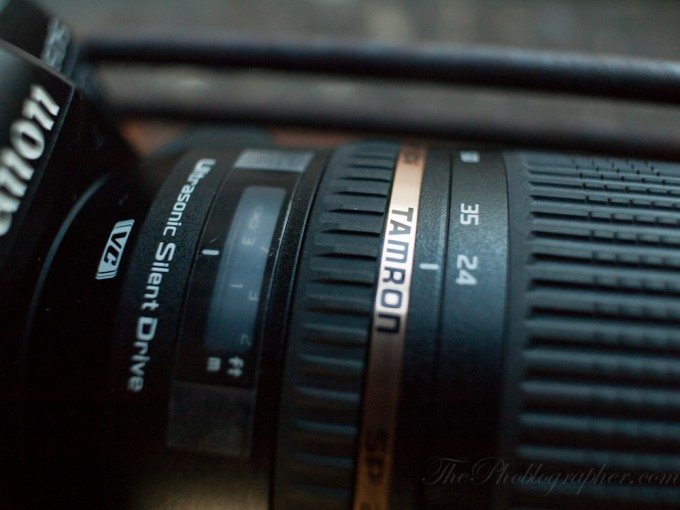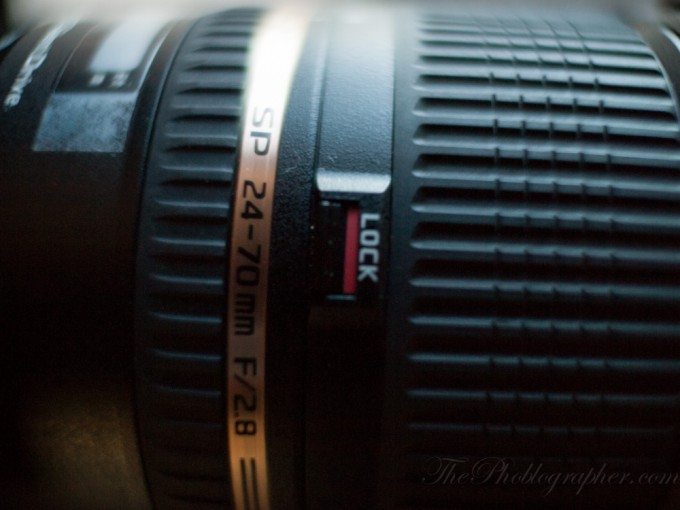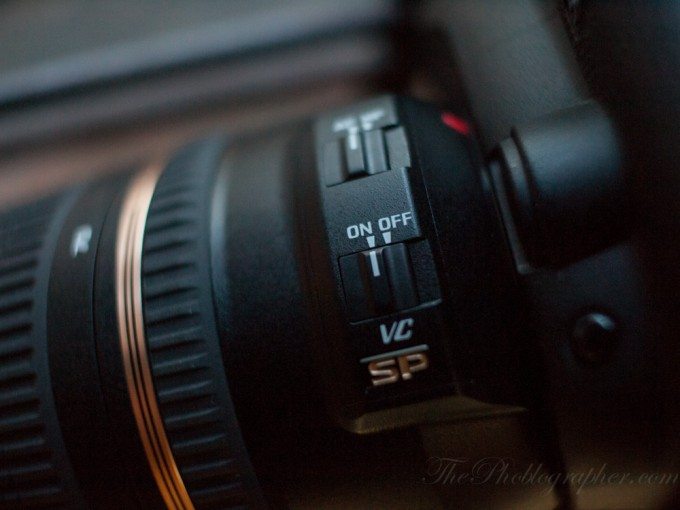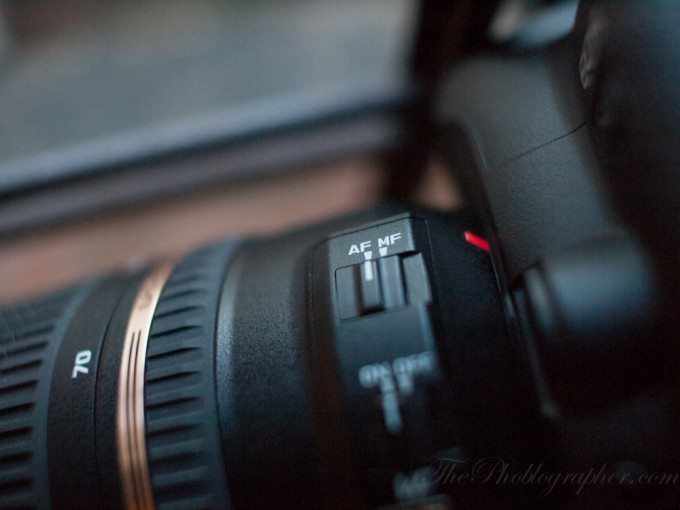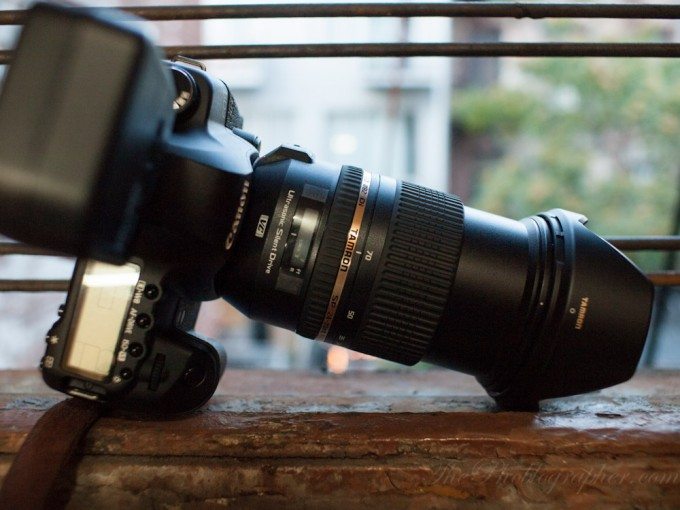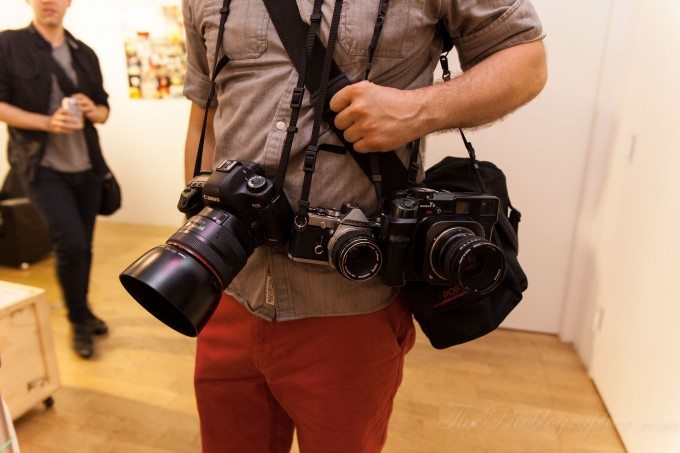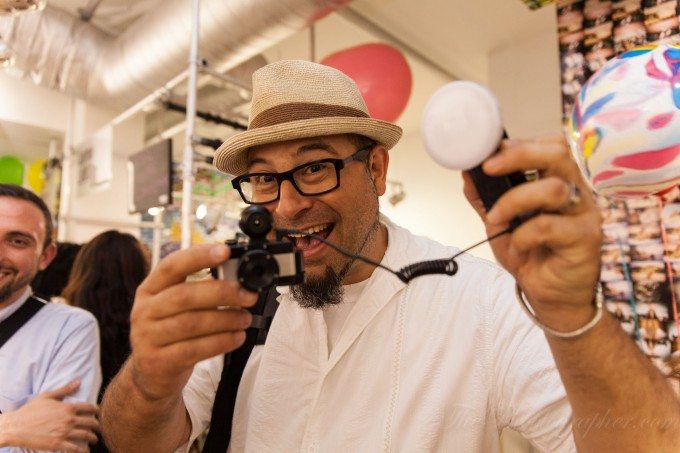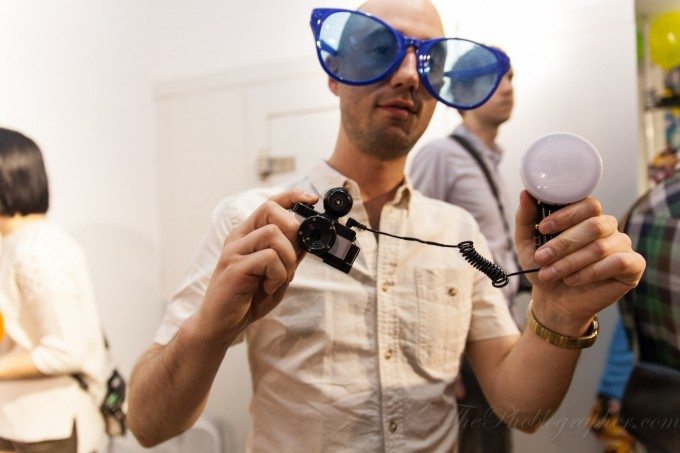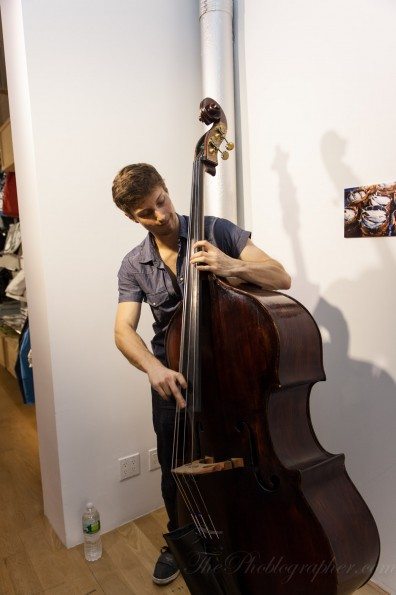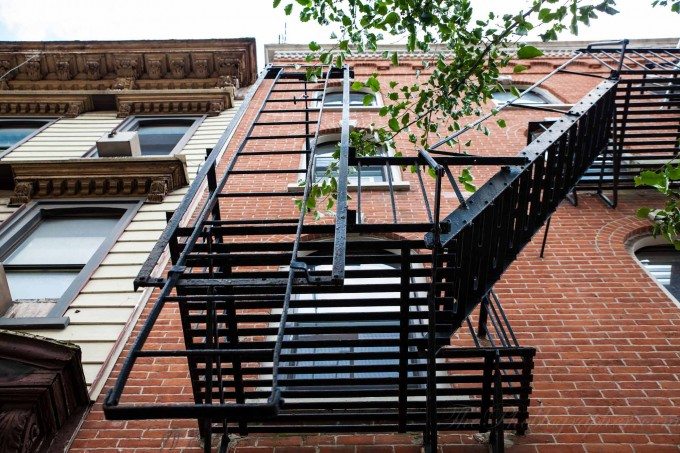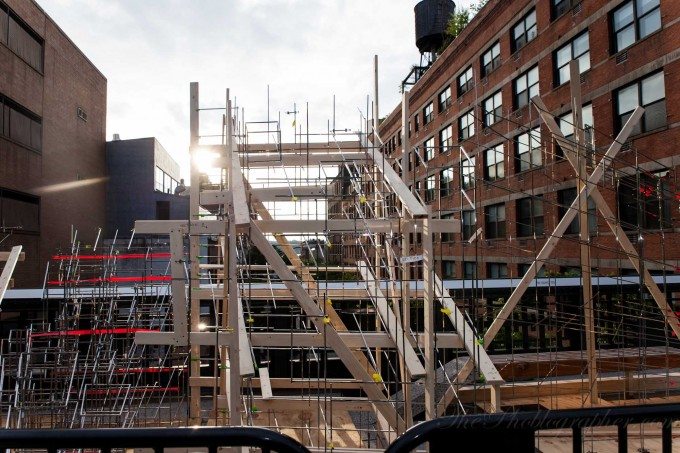Readers of this blog know very well that the staff generally all prefer prime lenses over zooms. The Tamron 24-70mm f2.8 VC SP for Canon EF mount, however, landed in my hands for two weeks. Tamron is an extremely solid third party lens manufacturer and they create some terrific sleeper lenses that otherwise get overlooked by those of the larger brands.
To put it bluntly, I hate zoom lenses. Moreover, I’ve never been a fan of the 24-70mm zoom range. This lens, however, has to have been the best I’ve ever tested: surpassing even Nikon’s version of the lens (without stabilization) in my personal opinion.
Gear Used
Tech Specs
Taken from the B&H Photo Video listing page.
| Features | |
|---|---|
| Image Stabilization | Yes |
| Autofocus | Yes |
| Tripod Collar | No |
| Physical | |
|---|---|
| Filter Thread | Front: 82 mm |
| Dimensions (DxL) | Approx. 3.5 x 4.6″ (8.89 x 11.68 cm) |
| Weight | 29.1 oz (825 g) |
Ergonomics
The new Tamrom 24-70mm lens for Canon excited many photographers when it was announced due to just how popular the focal lengths are amongst event, wedding, portrait, and photojournalistic photographers. To start, Tamron gave the lens an extremely solid build quality and seemed to change nothing about their design philosophy, which is totally fine with this photographer.
For the most part, it is also a fairly compact lens for the focal length that it is. The lens hood doesn’t add an extreme amount of length to it either.
The lens is first off characterized by two large rings. The one at the front of the lens is for zooming in and out. Thankfully, this lens was designed totally differently than other 24-70mm lenses. With others, the lens would protrude out at 24mm and come inward to 70mm. That isn’t the case with this. It all makes sense in terms of zooming in and out this time around.
Behind that ring is the manual focus ring, which I honestly only used once during the review period.
On top of the lens is also a fairly useless distance scale since it doesn’t also show the depth of field. Then again, many autofocus lenses are like this because they autofocus. A depth of field scale is better for manual focusing though.
There is a lock button on the zoom ring. This prevents the lens from moving about while in your camera bag. There is no lens creep, however, to begin with.
There is also an on/off switch for the vibration compensation. The stabilization is extremely quiet to begin with, and also very effective.
Above that is a manual focus/autofocus switch.
Overall, the lens is built extremely well and is also extremely easy to use when just looking through the viewfinder. Your fingers will not be fiddling around looking for switches when shooting: which is a big plus.
Autofocusing
The focusing on this lens is extremely quiet and also very speedy with my Canon 5D Mk II. It communicated with the camera very well and almost never missed the shot.
In fact, the focusing speed seemed to rival that of Canon’s 35mm f1.4 L.
Image Quality
For Portraits
During the lens review period, my roommate wanted me to take some photos of him to use online, so it was a perfect situation for me to test out the lens.
While shooting in the broad daylight of around 1pm, the lens offered me excellent sharpness and very good color rendition. However, I’ve seen better color rendition for skin tones, though my overall scenes came out quite vibrant. Even when trying to adjust the according color profiles on the 5D Mk II, I wasn’t able to quite get the skin tones I wanted.
I can’t really describe the color rendition, when I wanted it to be warm, it wasn’t. When I wanted it to be cooler, it wasn’t. It was a bit confusing, so every photo I shot needed to be color balanced to MY OWN personal preferences.
Either way, they were adjustable in Lightroom: which is a testament to the 5D Mk II’s excellent RAW files.
Matt, (my roommate), is also a fairly skinny gentleman and I was very curious to see what a zoom lens would do to his looks. To be more clear, I wanted to see just how distorted he would look.
Thankfully, effective posing methods saved the need for lots of extra work in the post-production phase. But the most interesting fact is that the lens profile adjustments in Lightroom 4 recognize this lens as a Sigma 24-70mm instead of a Tamron 24-70mm. I didn’t totally believe this at first and perhaps this is a glitch that will be fixed in future firmware updates from the time of writing and publishing this post.
When I shot these portraits, I also loaded my 580 EX II into a softbox and my beauty dish hack. Then lens was able to achieve even better colors when I shot in high speed sync mode in order to get more of a sense of the background while the softbox illuminated Matt’s front.
Because of this, I very much so recommend the new Tamron lens for creative portrait purposes. Here are a couple more photos from the portrait session.
For Events
The Tamron 24-70mm f2.8 VC SP came along with me to the Lomography launch party of their brand new Fisheye Baby 110 film camera. The focal lengths in this lens are the typical ones that a photographer would use during an event if they chose to not stick with all primes. Indeed, the lens is extremely versatile and also delivers some exceptional image quality.
A small peeve of mine though: I wasn’t exactly the most excited guy about the bokeh from this lens. However, that all must be countered by the fact that it is incredibly sharp and there is evidence of microcontrast as well. Tamron perhaps took a page out of the book from Zeiss with that one, though it was also evident in the 17-50mm f2.8 VC for Nikon.
During events, it can be critical for a photographer using an attached speedlite (as I did in all of these photos) to balance the flash output, shutter speed (controlling the ambient light), and the ISO control. With the f2.8 lens, I was able to keep the ISOs down a bit but still generally did need to stop down when I needed more of my subject matter in focus.
The nice thing is that the Vibration Compensation worked extremely well when I was forced to contort my body into weird positions in order to achieve the shot that I needed to get.
In fact, it seemed to rival that of Canon’s 24-105mm f4 L IS.
Here are a couple more photos:
Granted, for hail mary shots like the one above, I recommend using a faster shutter speed in order to prevent motion blur.
And no image stabilization in the world will save you from that.
For Random Stuff
The Tamron 24-70mm f2.8 VC SP showed extremely minimal distortion when shooting wide landscapes. To be honest, landscapes and random cityscapes seem to be what this lens was designed for in terms of color rendition.
If you take a look at the center of this image, you’ll also see just how sharp this lens can be. However, sticking true to our philosophy, we’re not going to delve deep into the pixel peeping abilities of this lens.
It should be noted that this lens does vignette a bit wide open and it is totally gone by f4. Keep in mind, however, that vignetting is easily gotten rid of using post-production software and it is not a reason for fanboys to rage in forums.
If you choose to use the lens with a more affordable flash like the Vivitar 285 HV, know that it will do very well with balancing exposures. The above image indeed is not an HDR despite the extremely strong back-lighting.
Also note, however, the lens flare: which is well controlled to the point where it looks really nice but still maintains a minimalistic type of look.
Ease of Use
This lens made shooting in real life situations extremely simple. Zoom in, zoom out, don’t worry about having to compensate for the reciprocal rule of shutter speeds and focal lengths due to the image stabilization, and just worry about your exposures.
And that’s how photography should be.
Conclusions
The Tamron 24-70mm f2.8 VC SP USD wins nothing less than my highest recommendations. Sure, it is expensive, but when you really weigh what you’re getting, it is quite worth its weight in gold. You’re getting excellent image stabilization, great build quality (but the lens hood did have its finish rubbed off a bit before the end of the review due to being tossed around in my camera bag) excellent sharpness, accurate focusing that doesn’t need microadjusting, and versatile color rendition.
Would I personally purchase it? The reason why I won’t is because I still personally prefer prime lenses and their faster apertures. And if you’re using a full frame camera body, you’re limiting yourself by not taking advantage of the most shallow depth of field possible. With that said, f1.8 is perhaps the slowest aperture lens in my camera bag.
For event, wedding, and portrait photographers looking for a versatile upgrade, this it the lens to spring for.
Please Support The Phoblographer
We love to bring you guys the latest and greatest news and gear related stuff. However, we can’t keep doing that unless we have your continued support. If you would like to purchase any of the items mentioned, please do so by clicking our links first and then purchasing the items as we then get a small portion of the sale to help run the website.


